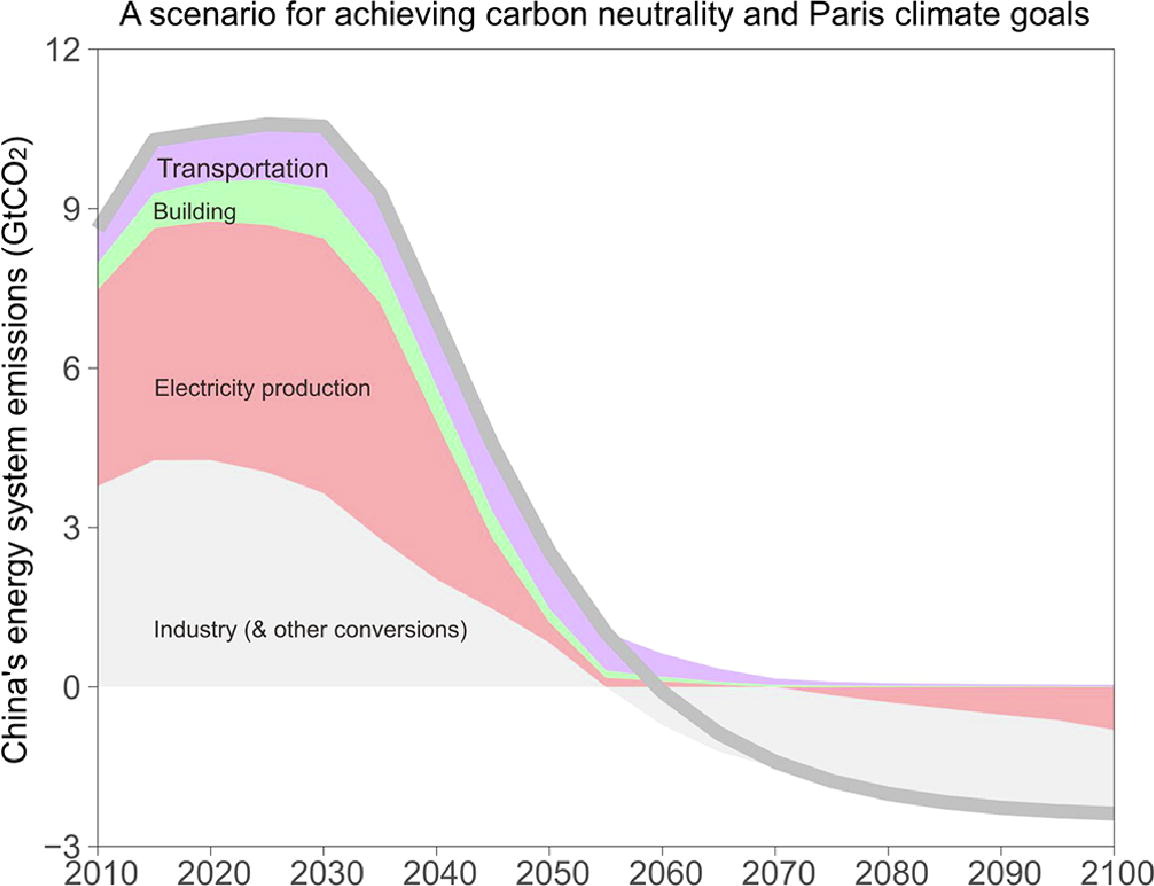Recently, Professor He Jiankun and Chen Wenying, assistant professor Wang Hailin, PhD candidate Yang Lei from the Institute of Energy, Environment and Economy of Tsinghua University,and cooperator published the article named Decarbonizing China’s energy system to support the Paris climate goals in Science Bulletin. Pan Xunzhang, associate professor of China University of Petroleum (PhD 2010, Institute of 3E), is the first author.

As the largest emitter of greenhouse gas (GHG) now, China’s “long-term low greenhouse gas emission development strategies” (LTS) will be important to the success of the Paris climate goals to limit global warming to well below 2 or 1.5 °C by the end of this century. In September 2020, China surprised the international community by announcing carbon neutrality before 2060. A critical question arises as to the strategic decarbonization pathways for China’s fossil fuel-dominated energy system, which accounted for 88% of national GHG emissions in 2018. Most studies on China’s energy system have focused on reaching peak carbon emissions aligned with its 2030 Nationally Determined Contribution (NDC), and some recent studies have started to investigate carbon mitigation options by mid-century in its carbon–neutral vision. A comprehensive long-term modelling of China’s energy system to support the eventual achievement of the Paris climate goals until 2100 is still short in the literature.
Here, the authors use an integrated assessment model, GCAM-TU , a refined Global Change Assessment Model with a detailed representation of China’s energy system, to derive new mitigation scenarios to 2100. In the modelling, China’s carbon budget, which is derived from the global carbon budget and equitable effort-sharing considerations, provides a frame for the ambition required by the global Paris goals to implement energy system decarbonization. Constrained by the future budget, the pace of decarbonization required to be implemented in China from carbon peak to carbon neutrality would be related to the deployment strategy of long-term negative emissions. They include three development narratives, net-zero emissions (NZE), net-negative emissions (NNE), and deep net-negative emissions (DNNE), to represent potential options of China in considering the deployment of negative emissions as part of its LTS. The NZE narrative indicates that carbon neutrality of the energy system once reached is maintained toward the end of the century. The other two narratives indicate to further achieve net-negative emissions after carbon neutrality.
In summary, they consider a total of five sets of mitigation scenarios, each of which combines one of the two global temperature-control goals (1.5 and 2 °C) that influence China’s carbon budget, and one of the three development narratives (NZE, NNE and DNNE) relating to decarbonization pace of China’s energy system. Without relying on net-negative emissions, they were unable to design scenarios that met the 1.5 °C budget following the completion of China’s NDC. The study provides illustrative references that could inform China’s energy system decarbonization pathways.